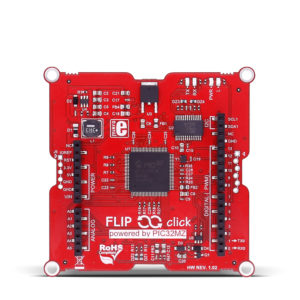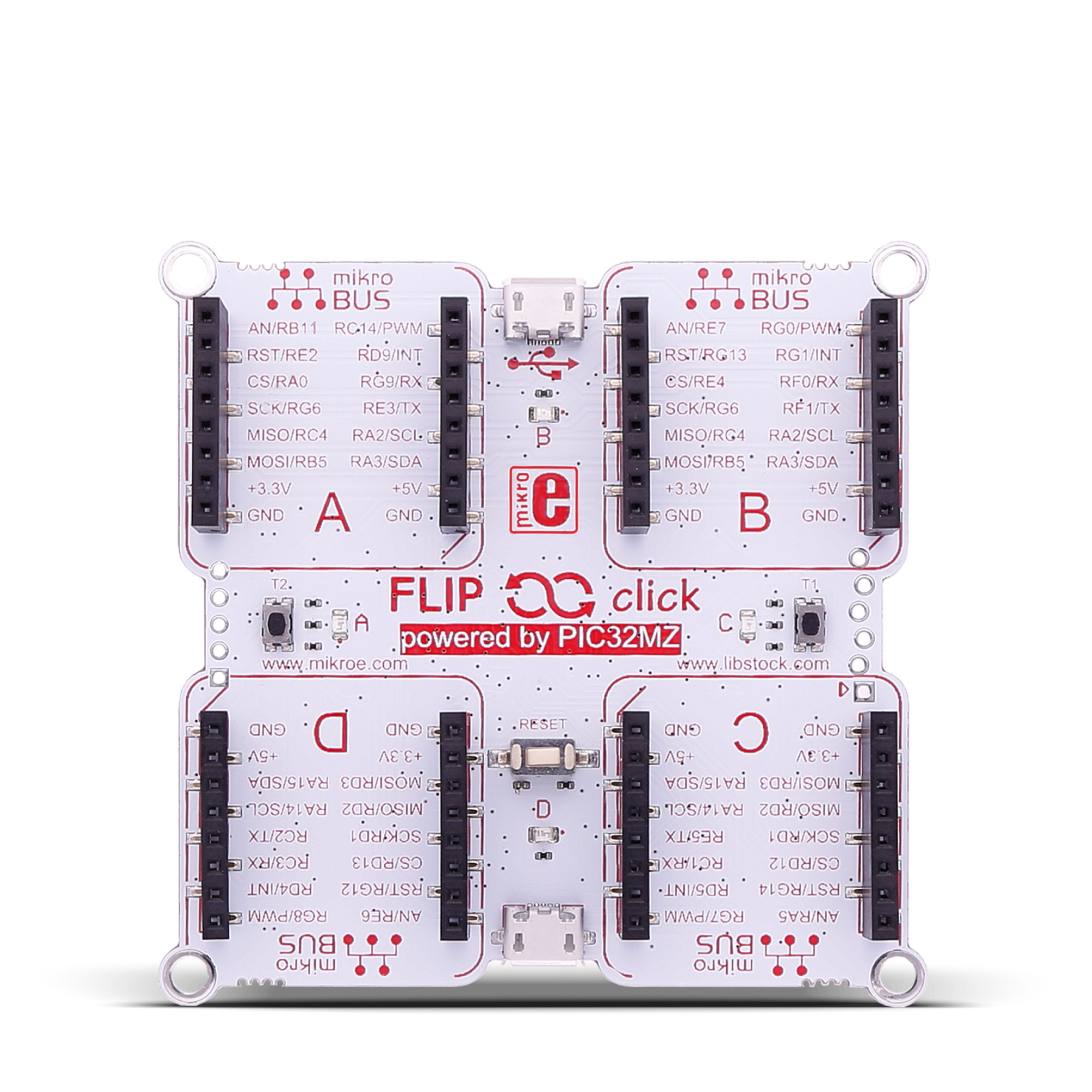- Get Started
- Learning
- Products
- Blog
- Beginner
For first time users of chipKIT modules. - Intermediate
For users who have a moderate exposure with chipKIT modules. - Advanced
For users who are experts with chipKIT modules. - Developers
- About Us
- Support
Announcing: MikroElektronika/chipKIT Flip N Click Powered by PIC32MZ
Posted 2017-07-27 09:14:28 by Majenko

It's hard to deny. Click boards are pretty cool! Having the ability to swap out just one element for an alternate part, or something else entirely, is a great way to rapidly prototype a design. But we also love our shields, and don't want to lose any of them just to start using Click boards. If only we could use both!
Well, we have exciting news for you. In partnership with Serbia-based MikroElektronika, we are proud to announce the release of the Flip&Click powered by PIC32MZ! Now you can have the best of both worlds!
The Flip&Click PIC32MZ is a power-house of a board, featuring the 250-MHz PIC32MZ2048EFH100. This processor has 2 MB of Program Flash, 160 KB of Boot Flash, and 512 KB of SRAM, so you'll have plenty of room for the code to make your design come to life. It runs at 252MHz, which will make your applications blazing fast!
In addition, the Flip N Click PIC32MZ has the following features:
- Two programming headers, one for Microchip MPLAB tools, and one for MikroElektronika tools
- USB to UART converter, with control of the reset line (intended for bootloader and serial communications with a host)
- Micro-USB connector that can run both Device and Host High-speed (480 Mbps) USB applications
- Two application switches and one reset switch
- Five user LEDs (four on the Click side, one on the shield side)
- Four Click sockets
- Arduino/chipKIT-compatible shield interface
Starting with v1.4.2, which has already been released, the chipKIT-core now supports the Flip&Click PIC32MZ. Simply update the core in the Arduino IDE, and begin using it right away.
The board is available in two flavors, one with a chipKIT-based bootloader, so it can communicate with the Arduino IDE. The other is a bootloader created by MikroElektronika, that can communicate with its development tools, including the PIC32 compilers that allow you to code in BASIC, C, or Pascal. You can program the board with either bootloader, so you can support whichever environment you wish.
Now that we have the power of PIC32MZ, and the flexibility of four Click sockets and an Arduino shield, let's go create some amazing things!
